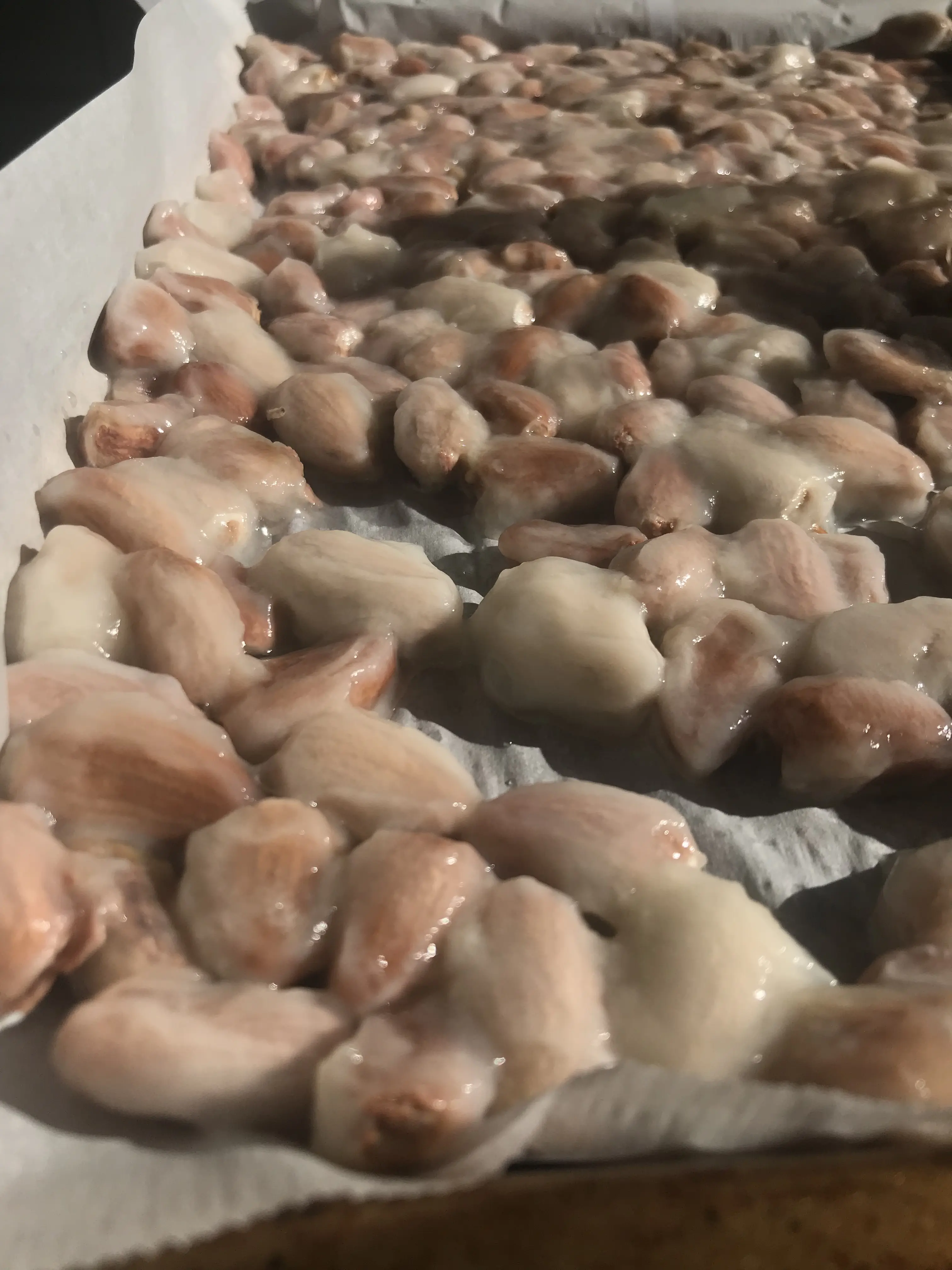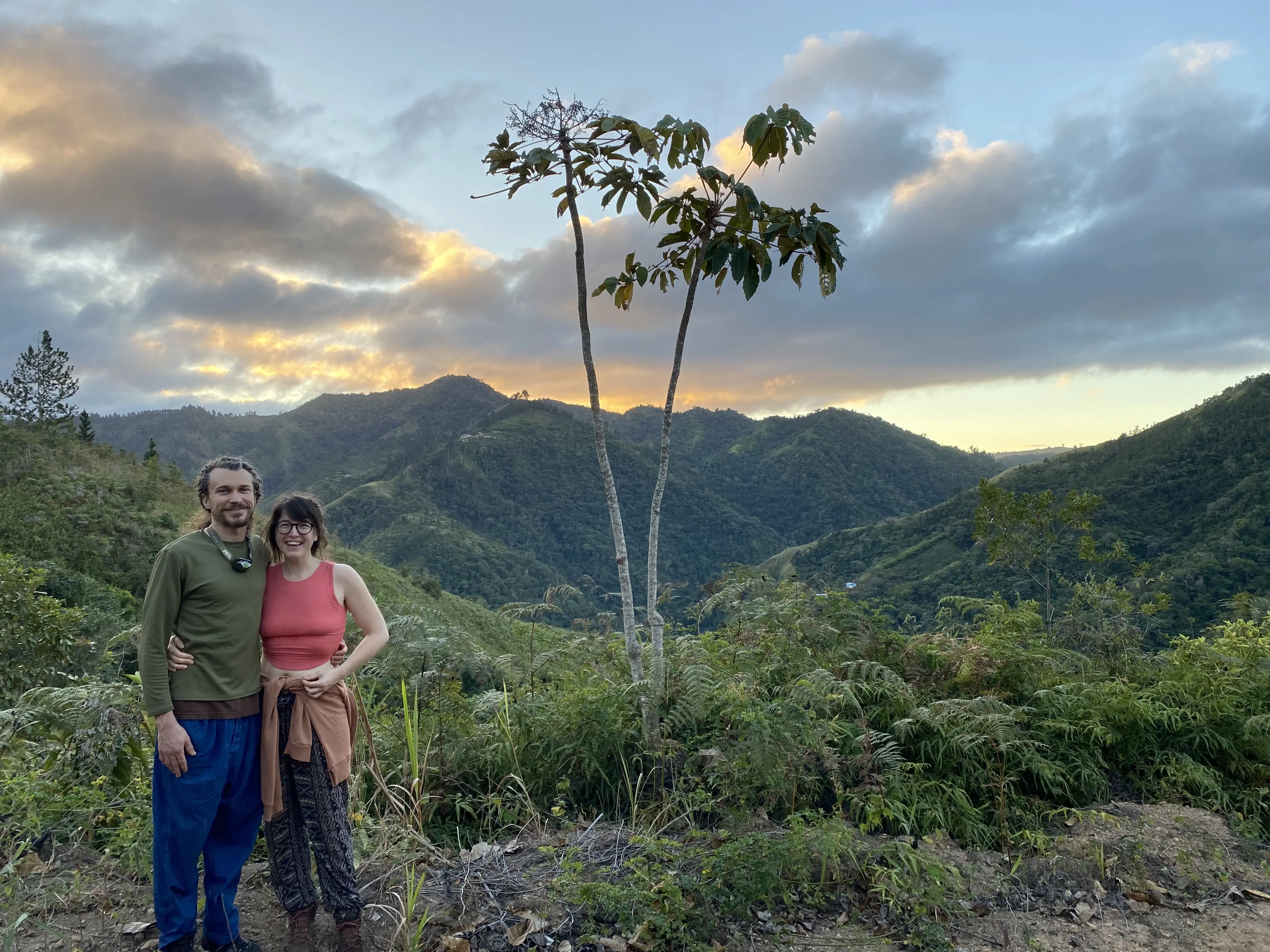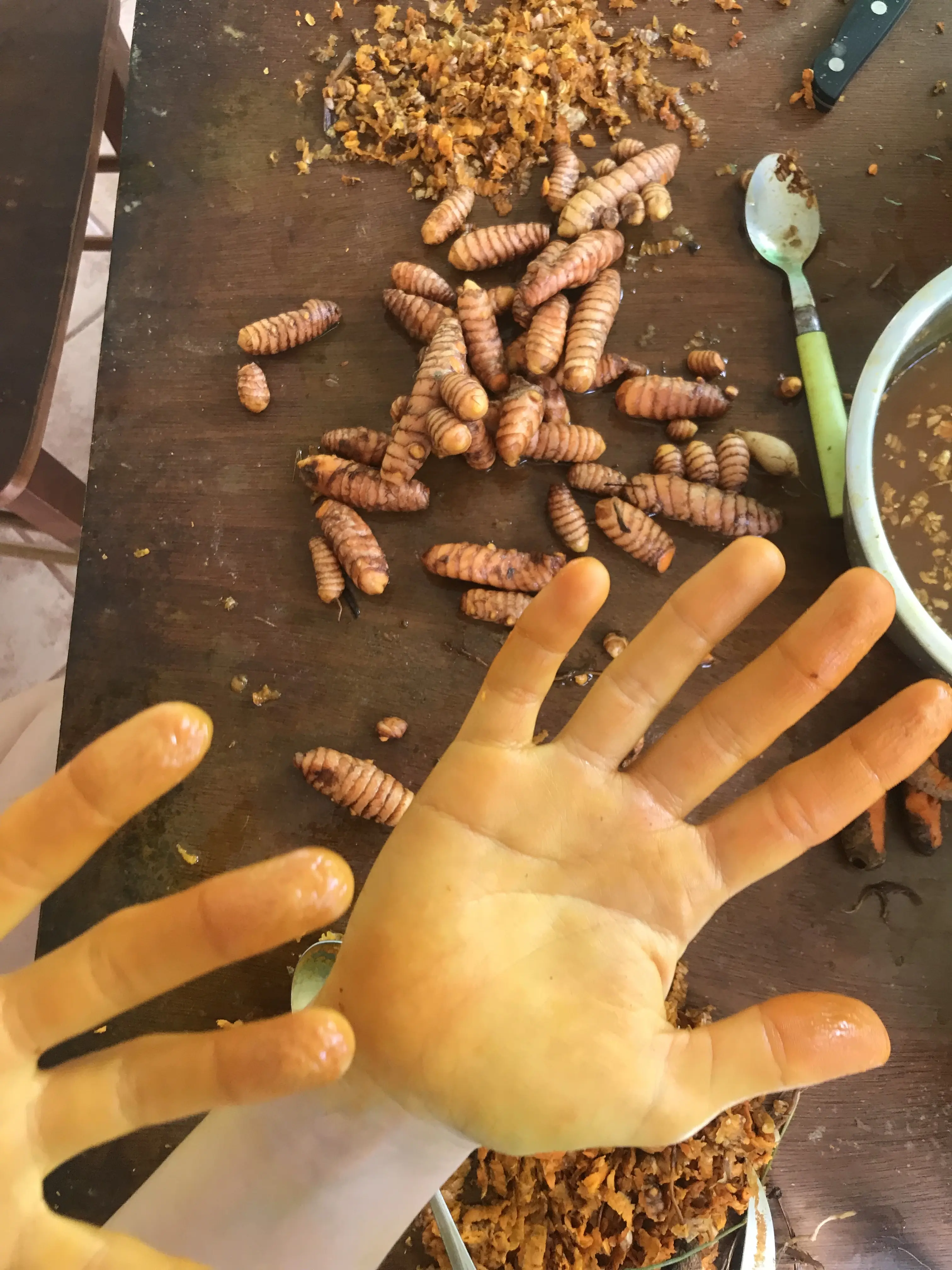Cacao Bean Fermentation and Farmstay in Puerto Rico
The Slimy Fermented Bean You Should Know About
I’m trying to embrace a seasonal approach to Community Cultures, which means I started winter 2024 fermenting in hibernation, then escape mode. For two weeks in early January, my partner, Jess, and I left the gray and cold of Pittsburgh to find the sun and tropics of Puerto Rico. We stayed on a farm in Utuado, the central mountainous region of the island.
This trip was part of a work-trade farmstay through workaway. We traded our labor on a farm for room and board. That’s our version of a low-budget vacation! The farm where we stayed is still in its early stages of development. The owners are converting what used to be a coffee farm into a diverse homestead.
During our two week stay, we harvested bananas, processed turmeric, planted cacao and citrus trees, harvested coffee, and learned about the process of fermenting cacao and coffee beans. Jess and I also crafted many types of wild soda in our free time using the farm’s ingredients. Banana peel soda! Lemongrass ginger beer! Orange-turmeric soda! Amidst so many diverse tasks in this tropical environment, I had the privilege of experiencing part of the process of cacao bean fermentation.
Say hello to the cacao beans that end up in your chocolate bar.

Demonstration of slimy cacao beans fermenting on a tray.
Fermenting Cacao Beans
Many people don’t know that cacao is fermented, as well as other products like tea, coffee and vanilla. In these products, fermentation helps to bring out the signature flavors that we love.
Did you know that cacao beans are quite bitter and don’t taste appealing when fresh?! Through fermentation the seed coat of the beans is destroyed, acidity is achieved, and flavor is developed.
Our host showed us how the fermentation process works using only a handful of fruit in a small container. Larger operations likely have large wooden boxes or other vessels for fermenting cacao. Unfortunately we didn’t get the chance to finish the whole fermentation process. However, I will share what we did.
First, we split open the harvested cacao fruit, ate the pulp around the beans, and kept the beans to ferment. Next, we set the beans in a small container outside to begin fermenting. After a few days of sitting in the container and stirring occasionally, we could see the seed coat beginning to break down. Then, a white, pulpy custard formed on the outside of the cacao beans (see picture above). It is delicious, but tastes nothing like chocolate. It has a complex fruity flavor, sweet and tart, with notes of other tropical fruit.
I saw the process through to the point when the seed coat was almost totally destroyed. After we had left, the fermented beans would be ready for drying. Finally, they would be further processed into cacao butter, powder, or bean-to-bar chocolate (in which the full beans are ground, mixed with sugar, and tempered to achieve optimum texture and flavor).
It was so exciting to finally see cacao fermentation up close. Getting to experience part of this process in such a beautiful tropical setting (in the midst of my usual cold, dark Pittsburgh winter) was incredible and irreplaceable! Since cacao fruit isn’t readily available in most of “the states”, I can’t simply try this at home. For that reason, I felt I had to share these slimy beans and the symbolism behind them in relation to global cacao production.

Trevor and Jess enjoying a sunrise in Utuado, Puerto Rico.
Chocolate History, Production & “Fair”-ness
Chocolate production predates Mayan civilization, starting with the Olmecs, the earliest known major Mesoamerican civilization. In other words, humans have been making chocolate for over 3,000 years. Unfortunately, since the development of the chocolate industry in the 19th century (in conjunction with neo-colonialism and imperialism), we currently see how the hunger for power and profit by brands like Hershey, Nestlé, Cadbury, and the Mars Corporation, has created an industry that goes hand-in-hand with oppression.
The dark side of chocolate is that labor practices surrounding cacao production are horrific, especially in West Africa, where Ghana and Côte d’Ivoire contribute more than 60% to the global output…. Read about child labor and slavery in the chocolate industry if you’re unaware. In many ways, the beautiful transformation of cacao into chocolate has exposed the ugly truth of capitalism and exploitation. Some companies have founded cooperatives and better labor practices within the industry, but even amongst fair trade, direct trade, and many other so-called “fair” certifications and claims, there is often little transparency on what’s actually happening in the field.
Puerto Rico isn’t specifically known for its cacao production, but with an agricultural resurgence in the past decade, farmers are growing more cacao that could support the island’s local economy and chocolate industry. Hopefully, as cacao production increases, Puerto Rico can resist the poor labor norms that dominate West Africa.
Fermenting Our Ideas
We’re far out from achieving real fair labor practices across most industries. But I believe collective action, through mass strikes, protests and movements, can change that. These unappealing, slimy fermenting cacao beans can teach us something — perhaps about the ugly parts of an industry that is largely exploitative, or maybe that something at first perceived as gross and distasteful can be turned into one of the world’s most treasured food products. I’m always amazed at how much we can learn about society, culture and the world through specific fermentation processes. We’re always fermenting, and capitalism can also be fermented and dismantled into a better world for all.
Anyways…
Cacao is rad.

A view of the farm where we stayed in Utuado.

Yellow hands from processing fresh turmeric into dried and powdered turmeric.

